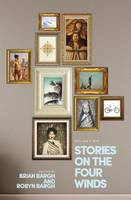Sunday 27th May kicked off national Sāmoan Language Week, with each of the main city centres hosting a service at a nominated Sāmoan church. There will be loads of events happening across Christchurch (the Ministry for Pacific Peoples website has a national events calendar).
 This year the national theme for le Vaiaso o le Gagana Sāmoa is “Alofa atu nei, alofa mai taeao.” Kindness given is kindness gained. To incorporate the themes of alofa (love and kindness) and ‘āiga (family) into our activities here at Christchurch City Libraries we are shaping our Tala mo Tamaiti (Storytimes sessions) around a picture book called How Do You Say ‘Thank you’? by Sāmoan author Karamia Müller. We were lucky enough to get permission from Karamia to feature her book for the week, and to catch her for a moment in her very busy life to have a quick chat to find out more about her writing and her life outside of writing.
This year the national theme for le Vaiaso o le Gagana Sāmoa is “Alofa atu nei, alofa mai taeao.” Kindness given is kindness gained. To incorporate the themes of alofa (love and kindness) and ‘āiga (family) into our activities here at Christchurch City Libraries we are shaping our Tala mo Tamaiti (Storytimes sessions) around a picture book called How Do You Say ‘Thank you’? by Sāmoan author Karamia Müller. We were lucky enough to get permission from Karamia to feature her book for the week, and to catch her for a moment in her very busy life to have a quick chat to find out more about her writing and her life outside of writing.
Karamia was born in Honiara in the Solomon Islands. Like many peoples of the Pacific, her Sāmoan heritage is influenced by the many islands of the Pacific, with her father being raised in Fiji, and her paternal grandfather being brought up in Tonga. It was the pull of family settled here in New Zealand that led to Karamia’s family settling in Auckland. She is the youngest of five siblings, and a proud aunty to three nieces and 4 nephews who range from 5 to 11 years old. A creative in many ways, Karamia is currently completing her Master’s thesis at the School of Architecture and Planning at the University of Auckland.

As is common with many New Zealand-raised Sāmoans Karamia was not brought up speaking Gagana Sāmoa exclusively. And like many of us who are not allowed the privilege of speaking our own languages for different reasons “this absence was felt profoundly.” Being the younger of her siblings, her mother spoke Sāmoan to her older sisters but Karamia has had to take on the learning of Gagana Sāmoa as an adult.
It was this learning journey that inspired Karamia to write How Do You Say ‘Thank You’? After finding that her learning style was not suitable for learning languages, she wanted to share her technique with others with similar learning preferences through the navigators in the book Alofa and Filipo. Karamia acknowledges that as a Samoan, speaking Samoan is important to us all. She is not only working on developing her proficiency in Gagana Sāmoa, but also looks to utilise Indigenous Pasifika themes and titles wherever she can in her architectural practice and scholarship.
When I first started to ask Karamia questions she assured me that she was “quite boring”, but after speaking to her I felt nothing but awe and inspiration.
As a parting gift for our readers I asked Karamia if she had a favourite Sāmoan proverb or ‘alagā’upu to share. She didn’t have one but when I told her about our theme – “Alofa atu nei, alofa mai taeao.” She shared her perspective: “This means to me that we can never run out of kindness because as much as we give, we receive. Which I think is a lovely way to think about kindness. I shall keep that in mind myself when I feel stressed or unkind! I think is my favourite, so thank you!”
Thank you Karamia for sharing with us. If you or anyone you know is also looking to improve your Gagana Sāmoa or begin your learning journey we have plenty of resources to get you going here at the library. There are also some excellent courses in Gagana Sāmoa for adults at Ara Institute of Canterbury.
Ia Manuia le Vaiaso o le Gagana Sāmoa! Happy Sāmoan Language Week!
Find out more
Jan-Hai Te Ratana
South Learning Centre


